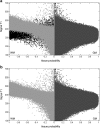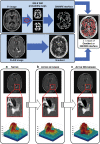Automatic Detection of White Matter Hyperintensities in Healthy Aging and Pathology Using Magnetic Resonance Imaging: A Review
- PMID: 25649877
- PMCID: PMC4468799
- DOI: 10.1007/s12021-015-9260-y
Automatic Detection of White Matter Hyperintensities in Healthy Aging and Pathology Using Magnetic Resonance Imaging: A Review
Abstract
White matter hyperintensities (WMH) are commonly seen in the brain of healthy elderly subjects and patients with several neurological and vascular disorders. A truly reliable and fully automated method for quantitative assessment of WMH on magnetic resonance imaging (MRI) has not yet been identified. In this paper, we review and compare the large number of automated approaches proposed for segmentation of WMH in the elderly and in patients with vascular risk factors. We conclude that, in order to avoid artifacts and exclude the several sources of bias that may influence the analysis, an optimal method should comprise a careful preprocessing of the images, be based on multimodal, complementary data, take into account spatial information about the lesions and correct for false positives. All these features should not exclude computational leanness and adaptability to available data.
Figures



References
-
- Anitha, M., Selvy, P. T., & Palanisamy, V. (2012). WML detection of brain images using fuzzy and possibilistic approach in feature space, WSEAS TRANSACTIONS on COMPUTERS, E-ISSN, 2224–2872.
-
- Bastianello, S., Bozzao, A., Paolillo, A., Giugni, E., Gasperini, C., Koudriavtseva, T., … Bozzao, L. (1997). Fast spin-echo and fast fluid-attenuated inversion-recovery versus conventional spin-echo sequences for MR quantification of multiple sclerosis lesions. American Journal of Neuroradiology, 18 (4), 699–704. - PMC - PubMed
Publication types
MeSH terms
LinkOut - more resources
Full Text Sources
Other Literature Sources
Medical

